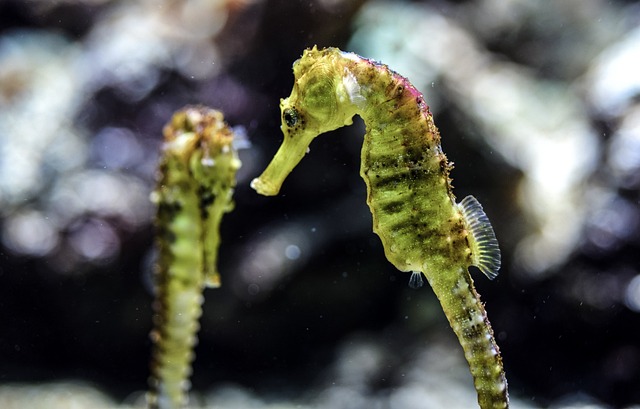News Highlights:
- According to a study recently published in the Journal of Threatened Taxa, extensive fishing off the Coromandel coast forced the great seahorse to migrate laboriously toward Odisha.
- Fishing is less intense in the Bay of Bengal off the Odisha coastline. But the shallow coastal ecosystem of the eastern Indian State may not be the new comfort zone for the fish with a horse-like head.
Great Seahorse:
- About:
- The Great seahorse, also known as the Hippocampus Kellogg has been included in the ‘vulnerable’ list due to its overexploitation.
- These are ovoviviparous, and the males give birth to live young.
- They also have some traits, such as small body size, fast growth and high fecundity, that may confer resilience to high levels of exploitation
- It was popular as an ornamental fish and as a constituent in Chinese medicines.
- They are poor swimmers but migrate to new habitats by rafting (clinging to floating substrata such as macroalgae or plastic debris for dispersal by ocean currents) to ensure the survival of their population.
- Despite the ban on fishing or trading of seahorses since 2001, the illegal activities have placed extreme pressure on the species that was highly dependent on its normal habitat.
- Distributions:
- They are distributed across diverse ecosystems, such as seagrass, mangroves, macroalgal beds, and coral reefs.
- Conservation status:
- IUCN: Vulnerable
- CITES: Appendix II
- Seahorse species in India:
- Globally, 46 species of seahorses have been reported, while India houses nine out of the 12 species found in the Indo-Pacific.
- Of the nine species, eight species, including the great seahorses, are in the vulnerable category of the International Union for Conservation of Nature Red List of Threatened Species.
- The country’s vast coasts are a seahorse hotspot across its diverse topography, such as seagrass, mangroves, macroalgal beds and coral reefs.
- The sea horse population is distributed along eight of India’s coastal states and five union territories excluding Andaman and Nicobar on both the East and West.
- Migration:
- According to a study, the migration of sea horses is a response to intensive fishing activities on the Coromandel coast, which has put immense pressure on the seahorse population.
- Seahorses move by way of rafting since they are poor swimmers by attaching to some floating substances such as algae or plastic debris, which move according to the movement of ocean currents to migrate to new places and to maintain their population.
- The study suggests that the 1300 km journey from Palk Bay and the Gulf of Mannar to Odisha is incited by extensive fishing pressure present on the Coromandel coast.
- The fishing intensity declines north of the Bay of Bengal off the coast of Odisha, which is a major factor in the migration of seahorses.
Way forward:
- Increased monitoring of coastal ecosystems and putting in place special measures to conserve the population of seahorse species.
- Stopping destructive fishing practices such as Bottom trawling and banning nets that catch seahorses.
Pic Courtesy: Pixabay
Content Source: The Hindu



